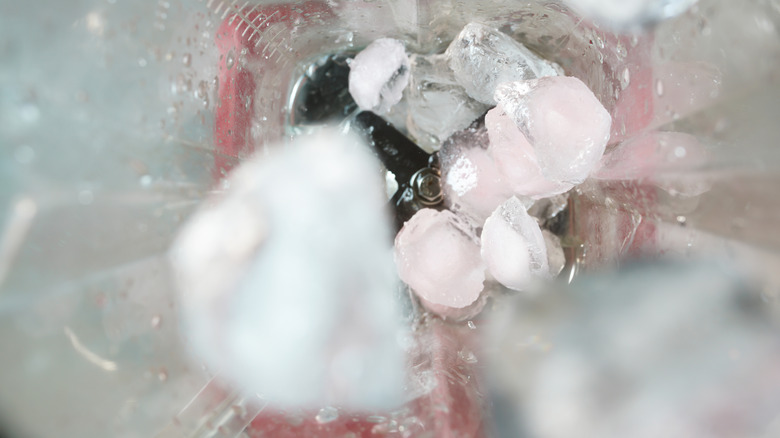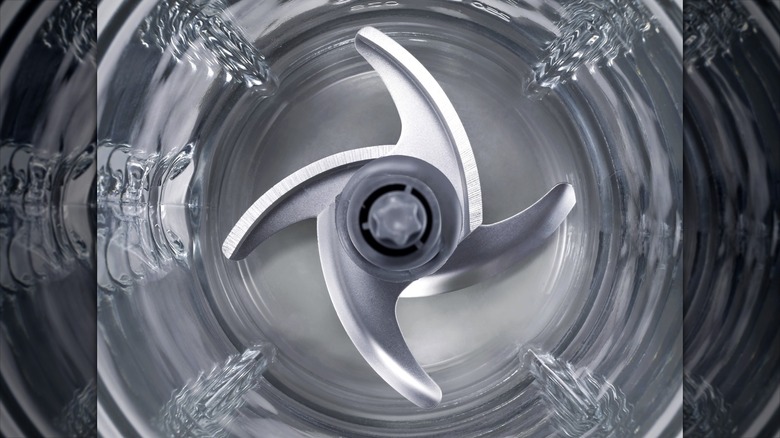Ice Isn't Actually Enough To Sharpen Blender Blades — Here's What To Use Instead
We may receive a commission on purchases made from links.
When you use any cutting tool, such as a knife or scissors, the blade will grow dull over time and need to be sharpened. A blender, too, makes use of blades, but these may not be so easy to deal with. Sure, the internet promises multiple blender sharpening hacks, such as using ice, rice, eggshells, and rock salt, but none of these actually do the job. As a Washington Post article pointed out all the way back in 1979, the tool used to sharpen a blade needs to be harder than the blade itself. Courtney Cole, an interior designer at TileCloud who specializes in kitchens and bathrooms, told The Takeout, "I've heard some people say that just chucking things in to sharpen [blender blades] works, which is absolutely not true, and can damage the motor over time."
Cole warned, "Blending anything with the intention to sharpen the blades rarely works. Using ice or another such item might also damage your blender. In fact, it might actually be causing more harm than good, by dulling them more over time." If you want to give your blender blades a sharper edge, heed Cole's advice: "The safest way to sharpen your blender blades is to remove them and sharpen them manually."
How to sharpen blender blades the proper way
Before you start sharpening your blender blades, you might want to consider whether this really needs to be done. Some manufacturers, such as Ninja, explicitly state that their blades should never be sharpened. If you really feel that dull blades are impeding your blender's performance, however, you might be able to purchase a replacement part. An Oster-compatible replacement blade assembly complete with jar base cap and O-rings costs just $8.49 on Amazon, and that retailer also sells blades to fit different blender brands (including Ninja).
If you still want to DIY your blade sharpening as Courtney Cole suggested, you'll need a sharpening stone, honing rod, or sandpaper. First, clean the blender — it's probably nasty if you haven't been washing it with soap and water. If you don't want to cut your fingers on the blades (which may be a hint that they don't need sharpening), you can also clean them by filling the blender partway with soap and water and letting it run for a few seconds. Disassemble the appliance and let the blades dry, then hold them up so the light hits them. If you look closely, you'll see that each blade is slightly slanted, or beveled. Gently run your grinding tool of choice across the edge in the direction of the slant until the blade gets shinier. This means that a new (and sharper) layer of metal has been exposed.
Once your blender blades are nice and sharp, here's a tip for making them stay that way: Instead of dulling the blades on ice cubes to make frozen drinks, use your ice cream maker for all your summer cocktail needs.

